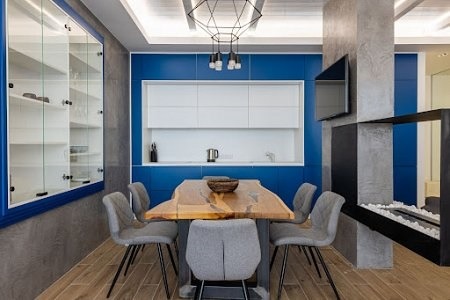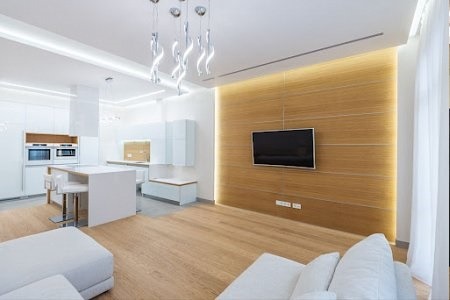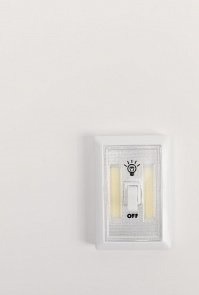Do you consider using LED strip lights but have some queries? What are LED light strips in general? Why are they called flexible? What determines their brightness? In what colours are they available? What kinds of LED strip lights can you buy? What’s the purpose of them? Are they dimmable? Are they safe? This and much more is explained in this text!
What are LED strip lights?
Strip lights are in the form of a flexible circuit board. It’s populated with LEDs which can be stuck in any place you want. Basically, if you would like to add powerful lighting somewhere, LED strips will be the best idea! They come in a variety of colours. What’s more, any LED strip’s brightness may be easily adjusted.
Each LED tape comes with a self adhesive backing. This lighting is really versatile compared to older kinds of lighting such as fluorescent tubes. LED strip lights will be ideal for kitchen, wardrobe and bathroom cabinet lighting. You will find the best LED strip lights on the website https://lucasled.ie/led-strip-lights.
Why are LED strip lights so flexible?
LED strips are really flexible because they can possibly be bent vertically up to ninety degrees! Thanks to that, you can easily add some light to the places which once you believed were beyond your reach. LED lighting offers us a wide range of applications. It may be used in the office, at home or as a part of decoration.
This kind of lighting can be laced through fine gaps. It can also be affixed to the insides of cupboards and shelves. They can be installed in tight spaces – they are really easy to hide! Flexibility means the possibility of betting strips into unusual shapes. Strip lights are made to fit uneven surfaces.
What determines the brightness of LED strip lights?
We determine brightness of LED strips using the metric lumens. It is usually described in lumens per metre of foot. This type of LED lights can have different levels of efficiency, in contrast to incandescents, which are all the same level. It simply means that a wattage rating isn’t always meaningful when it comes to determining actual light output.
If we search for a good quality LED strip light, we ought to choose the one which provides not less than 450 lumens per metre. It will provide us almost the same amount of light output per foot, just like in the case of traditional T8 fluorescent lamps.
Be careful while choosing your perfect LEDs – an LED strip light with no brightness specification in lumens is something you shouldn’t buy. LED strips which claim very high brightness is also a red flag because they may be a cause of premature failure.
What colours do LED strip lights come in?
LED strip lights are available in various colours. When it comes to indoor lighting applications, white light is the most popular and useful option. White LED strip lights will look perfect in every interior! However, sometimes we would like to have a punchy, saturated colour effect. In this case, you should use coloured LED strips, which will give you great theatrical and accent lighting effects. LED strips come in any colour you want – violet, green, blue, red, amber and even ultraviolet or infrared!
There are two types of coloured LED strip lights – colour changing and fixed single colour. The first one consists of many colour channels on one LED strip. The most basic type includes RGB colours (red, green, blue) and it allows you to mix the various colour components. The second one emits just one colour.
How to create ambient lighting with LED strips?
Ambient light is a general illumination within space. Having an ambient light throughout the home is a key in interior design. LED strips give us the possibility to brighten our houses properly. You can create ambient lighting by strip lights in four ways – by indirect lighting, task lighting, dimmers and accent lighting.
What are the different types of LED strips?
Depending on what exactly you need and what are your plans, you will need one type over the other. There are a few types of LED strip lights. Firstly, DC LED Flex Strips, which have an adhesive backing to ensure easy mounting. They may be cut every two inches.
Secondly, AC LED Flex Strips – lights which run straight from your outlet. The only thing you need to do is to plug in. Thirdly, LED Rope Light, encased and omni-directional LED lights available in the standard rope light packaging. Fourthly, High Output LED Strips, mounted to rigid strips with circuitry and on board drivers.
What are LED strip lights used for?
In the past, LED strip lights used to be used only in accent lighting, task lighting backlighting and decorative lighting applications. Nowadays, there are so many ways to use LED strips, not only in offices and houses!
A wide range of leading LED lighting products from Crystal Fountains are suitable for any water feature application and make your swimming pool areas more attractive. LED strip lights are also suitable for commercial applications too! LED strips might be ideal for both indoor and outdoor decoration. You can illuminate your driveway, patio, or garden!
How to cut LED strips?
The strip lights have been thought of and designed in a way that you can simply and smoothly cut them with a pair of scissors. It’s as easy as cutting a piece of paper! There are two copper dots at the end of each pair of lights. All you need to do is to cut between them!
Remember about determining the number of lights which you will need before you cut. A place with the copper dots is the right place to cut – if you choose some other part of the strip, the outcome can be some of the lights working improperly.
Do LED Lights Attract Bugs?
LEDs usually don’t attract bugs. However, in some cases when your LED is on the blue end of the spectrum, insects and other bugs will settle around it.
You might sometimes see spiders around your LEDs. But do LED lights attract spiders? Not really. It’s not the light that’s attracting them. It’s the bugs that they are after.
If you are someone who doesn’t like bugs or is afraid of spiders, it might be a good idea to change your current LED lights. You can replace them with those that have more yellow or orange in their color spectrum.
What are the pros and cons of LED strip lights?
Let’s just start with the advantages of LED strips. They are bright and long lasting – they have a long lifespan that makes them cost effective. They use most of their energy in order to produce light. It makes them energy efficient. Additionally, they are easily programmed and controlled, and also, they do not produce much heat. LEDs’ packages are resistant to shock. They are really durable! You can use them in a variety of ways.
When it comes to disadvantages, there are very few of them. Replacing a single bulb from the strip might be difficult for a layman. However, if it is your first time doing this, you can ask somebody for help. The next approach will be much better!
How do you power LED strip lights?
You need to provide power somehow. Thanks to the power, your lights will work at their best. A proper power supply steps down power voltage and converts currents (from AC to DC). If you search for the best power supply for your strip light, you should know your LED voltage. Usually, the voltage will be between 12 and 24V. If you own 12V LED strips, you have to pick up 12V power supply. The same shall apply to 14V LEDs and power supplies.
Are LED strip lights dimmable?
Not only halogen, fluorescent and incandescent bulbs are dimmable. LEDs can be dimmed too – with a few exceptions. You have to make sure that you own a dimmable LED driver. LED strips rely on a constant current source that can be supplied only by a driver which switches an AC power supply to DC.
Are LED strip lights safe?
You don’t have to worry about safety issues – LED strip light is really safe! It is much safer to use LED lighting rather than the other modes of lighting. The majority of the other means such as incandescent and fluorescent bulbs work in a way that they transform energy to heat, which emission is the biggest hazard when it comes to lighting. LED strips work differently. What’s more, they don’t contain harsh toxins or chemicals which means that the whole family can make use of them.
How to choose and buy LED strip lights?
First of all, you should choose between simply white LEDs or RBG – it depends on what your expectations are. Pay attention to the density of LEDs per band. If you want brighter colours, choose a band with 18 LEDs per metre. If a less bright strip is okay for you, choose the one with 9 LEDs per metre. You should also consider the length of the reel. Do you need waterproof LED bands? Think about it too! Don’t forget to check the brightness of your strip and consider getting additional accessories, such as amplifiers.
Summary
Now you know that LED strip lighting is the most flexible kind of lighting, which comes in many different colours. There are a few types of strip lights, their level of brightness may differ, however, they are all versatile and safe. Definitely they have far more good qualities than bad!




